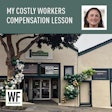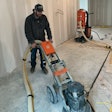

The coming year as a whole is not expected to bring significant relief over 2012. "We expect the recovery to remain lackluster," says Sophia Koropeckyj, managing director of industry economics at Moody's Analytics, a research firm based in West Chester, Pa.
The numbers tell the tale. The most common measure of the nation's economic health is growth in gross domestic product (GDP), the annual total of all goods and services produced in the United States. Moody's expects GDP to increase by 2.4 percent in 2013. That's not much of an improvement over the 2.3 percent anticipated for 2012 when final figures are tallied.
Moody's forecast might not seem all that bad, given that the GDP increase for an economy in average growth mode is 2.5 percent. But there's a problem: A nation recovering from a recession needs more robust expansion. "By most measures, this recovery is among the weakest in the past 50 years," Koropeckyj says.
What's holding things back? Koropeckyj points to a number of areas. "Fiscal restraint on the local and national level, weaker global demand, a housing market that has hit bottom but has a long way to go to become healthy, and weak income growth are all constraining a stronger pickup in employment." Other factors are the weakening economies of China and Europe-both important markets for U.S. exports.
All those factors are coming together to subdue the public mood. "Consumer confidence is still at a level consistent with a recession," says Scott Hoyt, senior director of consumer economics for Moody's. "Consumers remain concerned about economic conditions. There is still over 8 percent unemployment, weak growth in wages, volatile stocks and high gasoline prices. There are a lot of things to keep consumers on edge."
Residential Resurgence
While still far from healthy, the home building industry is on the mend. "Residential construction and home sales have been trending up since mid-2011," Koropeckyj says. "Residential construction-related jobs are also slowly creeping up. The months of inventory of new homes are low, having fallen below five months, and existing-home inventories have stabilized around six-and-a-half months, not far from the normal rate."
Thanks to tightening inventories, housing prices are showing signs of a rebound after dismal years, Koropeckyj says. "Other signs of a healthier housing market include a rapid decline in the rental vacancy rate, stabilization in homeowners' equity, and low early-stage mortgage delinquency rates." Additionally, says Koropeckyj, record low mortgage interest rates and the expansion of the Home Affordable Refinance Program are boosting mortgage refinancing.
Housing, while improving, remains challenged. Although in November the National Association of Homebuilders (NAHB) Housing Market Index (HMI) reached its highest level since 2006, its reading of 46 still means more builders view the market as poor than good. Home construction in general is barely up from a 40-year low. Home sales remain near their 1990s pace, and, perhaps most important, financing remains a problem: "Mortgage lenders are still wary about extending credit," says Koropeckyj. "The high share of homeowners with negative equity also constrains the housing market."
Given the distance still to go for housing, it's apparent that the industry will not play its traditional role of stimulating an economic rebound. "We're not going to see housing lead the way out of recession," says Walter Simson, principal of Chatham, N.J.-based Ventor Consulting. "That's because banks were hurt too badly [by the financial meltdown of 2008] and housing prices were on a bubble. So gains will need to come from other areas."
Corporate Maneuvers
If the economy remains troubled, many large corporations have managed to thrive. Indeed, they have been piling up hordes of cash to position themselves for a fresh round of capital and labor investment when the market rebounds. "Businesses are in excellent financial health; their costs are down and they have become highly competitive and profitable," Koropeckyj says. "Employers have little slack in their labor forces, so layoffs have declined dramatically."
Reports from the field reinforce this assessment. "Of the 1,000 or so companies that we watch closely, sales generally are strong," says Michael Smeltzer, director of the Manufacturers Association of South Central Pennsylvania, a trade group. What remains weak, though, is sales booked for future delivery. "Customers are only buying what they need to buy ... As a result, businesses are not investing in capital or people."
In other words, people are unsure about what lies ahead. "A number of issues collectively depress consumer and business confidence," Smeltzer says. "What will federal tax policy be? What will be the effect of any sequestration having to do with federal deficit reduction?" Also, what will be the impact of healthcare reform?
Those uncertainties prevent corporations from hiring the people they need for future growth. And that brings up another problem: A lack of requisite skills in the labor pool. "There is no improvement in the chronic labor shortage-it has worsened," Smeltzer says. "There is a mismatch in that employers have job openings that they cannot fill. As a result of technology, many of the unskilled labor positions that were stepping stones have disappeared. We now have robots doing the building."
What Will Lead the Recovery?
If we can't rely on housing to lead us in the recovery, then economic gains will have to come from other sectors. One such area, says Simson, is exports. "Over the last several years the dollar-to-euro exchange rate has stayed in a narrow band. That means Europeans can purchase American goods without too much punishment."
Another promising area is onshore production. "I am seeing some companies pull their production lines back into this country from China and other countries," Simson says. "That's especially so with high-value and mission-critical items. The reason is that foreign operations can make companies vulnerable from a logistics standpoint."
Companies are also concerned about losing control of their intellectual property when operating overseas. Finally, there is a leveling of the wage discrepancy: Wages in China have been steadily increasing over the past few years.
Will all of these factors come together to spark a rebound? Simson is optimistic. "We will see a rebound because bank capital is getting stronger every quarter and household debt is being reduced," he says. "This is setting the stage for improvement."
While the economy's growth is disappointing, it is also continuous. The expected 2.4 percent GDP boost in 2013 is, after all, not far off the historic norm. The problem, says Simson, is that we became too accustomed to the rapid escalation of the flush years. "We took the candy high of the real estate and financial bubble and thought such rapid growth was normal."
Maybe an old proverb applies today: Patience will be rewarded. "The current growth rate is not enough to make you jump up and down, but it keeps people off the streets," Simson says. "I see 2013 as good as 2012, and 2014 getting stronger."

































